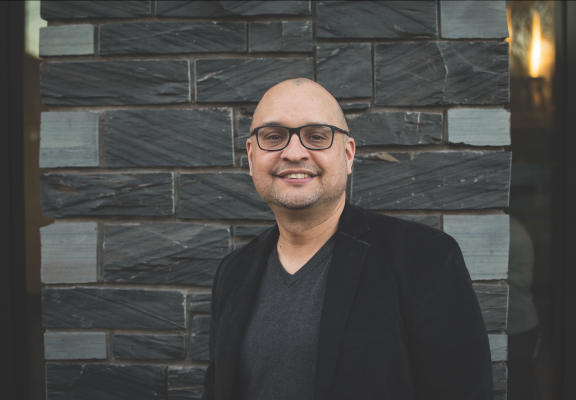CDO Aims to Improve Diversity Hiring Process
ANDREW BEECHER/The Observer
Chief Diversity Officer Rafael Zapata discusses efforts to diversify staff and faculty at Fordham.
February 20, 2019
Fordham’s administration has long been working towards creating a more diverse faculty and student body. Chief Diversity Officer Rafael Zapata believes that process starts with diverse hires, if the university will allow for the time that takes.
Zapata’s focus is to improve the infrastructure surrounding diversity at Fordham. Although he has only been working at the university for roughly a year, he has already hit the ground running with initiatives and a vision for the future of diversity at Fordham.
One of Zapata’s main goals is to build on the momentum of the action plan outlined by university President Rev. Joseph M. McShane, S.J., in November. The plan, named “Response to the President’s Task Force on Diversity,” outlines specific diversity initiatives the university implemented in 2017 regarding “people, curricula, community engagement, and policies and procedures.” The “People” section describes, for example, Fordham’s changes in how they go about recruiting more students of color. The university has seen that supplying more financial aid has been insufficient in increasing the number of people of color at Fordham; Zapata will be an instrumental part of making changes like these happen.
Zapata recognizes that the work he does is a long-term process which will “take continued efforts and happen over time.” He specifically highlighted that, in relation to faculty diversity, it is necessary to “design policies that will enhance diversity in the candidate pool.” He aims to generate candidate pools with more people of color and “structure processes that increase the likelihood of having outstanding, diverse pools of candidates.”
New hire searches at Fordham typically take seven months to a year and they all go through the same general process. Requests for new hires come early in the spring semester, decisions are made before summer break and searches take place during the fall of the following year.
Zapata explained that one of the biggest factors that impact biases in searches is time. His ultimate goal is to develop a process in which departments have a longer window to conduct their searches because, when decisions are made late, it can disadvantage departments in their ability to hire diverse faculty. He also emphasized the importance of addressing this and other influential factors to “reduce stress, provide more time, and more clarity” for departments.
Furthermore, Zapata wants his office to provide individual support institutional support to all departments in their hiring processes. “They shouldn’t be left alone to do this by themselves,” he said. Zapata mentioned implementing a program in which his department will train people to provide workshops for search committees with the goal of them “becoming more familiar with best practices,” tentatively named the Equity Advisors program.
Zapata believes diverse hires begin with “how we talk about diversity in the job advertisement.” He notes that, although each discipline goes about posting job ads differently, he wants to implement a more active outreach towards potential candidates instead of relying solely on passive job ads. Zapata noted that people of color can still be underrepresented because of not having relationships or networks with potential employers and, because of this, his active outreach would be to take the time to cultivate those networks.
Zapata recognized that it is not easy to implement such a personal approach. “Sometimes you get as many as 500 applications,” he said. However, giving more attention to the university’s hiring process opens up a broader conversation about how new, diverse hires could affect the future of departments, students, or even fields of study; it is important to consider how new diverse hires may supplement or bolster the strengths of each department. “[It] depends on how intentional departments are in seeking diversity in their candidate pools,” Zapata said. “This is where leadership, preparation, support comes in.”
Zapata’s vision gives the Fordham community a positive outlook for the future of diversity at Fordham. He affirmed that, “We need to look like this country” and represent the diversity in it.













